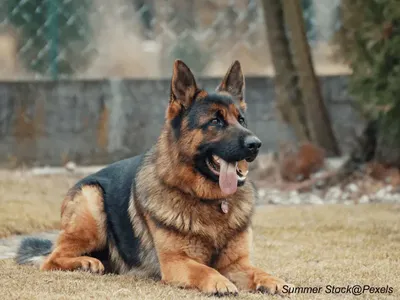German Shepherd Dog
AKC & CKC Herding Group
Origin & History
The German Shepherd Dog emerged in late 19th century Germany through the systematic breeding efforts of cavalry officer Captain Max von Stephanitz. His vision was to create the perfect working dog - intelligent, versatile, and physically capable. The breed's foundation stock came from various herding dogs across Germany, selectively bred to standardize type and enhance working ability.
Developed as a herding dog (hence the name "Shepherd"), the breed's exceptional intelligence and trainability quickly made it valuable for military and police work. During World War I, German Shepherds served as messenger dogs, ambulance dogs, and guards, gaining international recognition for their bravery and utility. Their performance so impressed Allied forces that many soldiers brought them home after the war.
Von Stephanitz maintained strict breeding standards through the Verein für Deutsche Schäferhunde (SV), the world's first breed club for German Shepherds founded in 1899. He emphasized working ability over appearance, declaring "A German Shepherd is a working dog first, and must remain so." This philosophy shaped the breed's development as one of the most versatile working dogs in history.
Today, German Shepherds excel in countless roles including police/military work, search and rescue, guide dogs for the blind, explosive detection, and as devoted family companions. They remain one of the world's most recognizable and respected breeds.
Stats:
- Height: 22-26 inches
- Weight: 50-90 lbs
- Coat: Double coat with thick undercoat
- Colors: Black & tan, sable, solid black, bi-color
- Lifespan: 12-14 years
| Traits: | 1 | 2 | 3 | 4 | 5 |
|---|---|---|---|---|---|
| Energy: Requires 90+ minutes of vigorous exercise daily. | ✓ | ||||
| Ease Of Training: Extremely intelligent and eager to work. | ✓ | ||||
| Grooming: Heavy shedding; daily brushing during seasonal blows. | ✓ | ||||
| Family Dog: Devoted to family but may be reserved with strangers. | ✓ | ||||
| Watchdog: Excellent natural protector with strong guarding instincts. | ✓ | ||||
| Beginner Friendly: Best for experienced owners due to high exercise needs. | ✓ | ||||
| Prey Drive: High - strong chase instinct that needs management. | ✓ | ||||
| Barking: Will bark to alert but can be trained. | ✓ | ||||
| Good with other dogs: Good, if well-trained & properly socialized. | ✓ |
Health Considerations
- Hip and Elbow Dysplasia: Common joint issues in the breed
- Degenerative Myelopathy: Progressive spinal cord disease
- Exocrine Pancreatic Insufficiency (EPI): Digestive disorder
- Bloat (GDV): Life-threatening stomach torsion
- Allergies: Skin and food allergies common
- Panosteitis: "Growing pains" in young dogs
- Heart Conditions: Including cardiomyopathy
Please check the Canine Health Information Center (CHIC) and parent breed clubs for health information.
Glossary of general canine health conditions.




